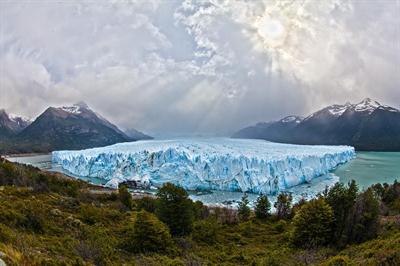PDF chapter test TRY NOW
Glacier
Glacier: A huge mass of ice moving slowly over land due to gravity is called a glacier.

Glacier
The gradual change of snow into granular ice is called ‘firn’ or ‘neve’, and finally, it becomes solid glacial ice.
Firn is generally defined as snow that is of minimum 1 year old and has therefore survived one melt season without getting transformed to glacier ice.
Firn is gradually transformed to glacier ice as density increases with depth, as older snow is buried by piling up of newer snow falling on top of it. Year after year, successive accumulation layers are built up.
The two main types of glaciers are:
- Mountain or Valley Glaciers and
- Continental Glaciers
Cirque: It is a bowl-shaped (armchair like) depression created by glacial erosion. It had a steep sidewall and headwall surrounding an armchair shaped depression. E.g. Corrie – Scotland (United Kingdom), Kar – Germany.
Arete: An arête is a thin crest of rock (knife-like) left after two adjacent glaciers have worn a steep ridge into the rock.
Pyramidal Peak: The pyramidal peaks are formed when three or more cirques meet together. It is the rock left after eroding back to back (e.g.) Matterhorn.
U-Shaped Valley: A valley formed by glacial erosion with "U" shaped cross-section, steep walls and generally a broad and flat floor. A U-shaped valley is formed when a glacier widens and over-steepens a V-shaped stream valley.
Hanging valleys are found on the sides of larger U-shaped valleys. These are tributary valleys eroded by a tributary glacier, and that hangs over the main valley.
Fjords are long, deep, glacial valleys that are partly submerged in the sea.
